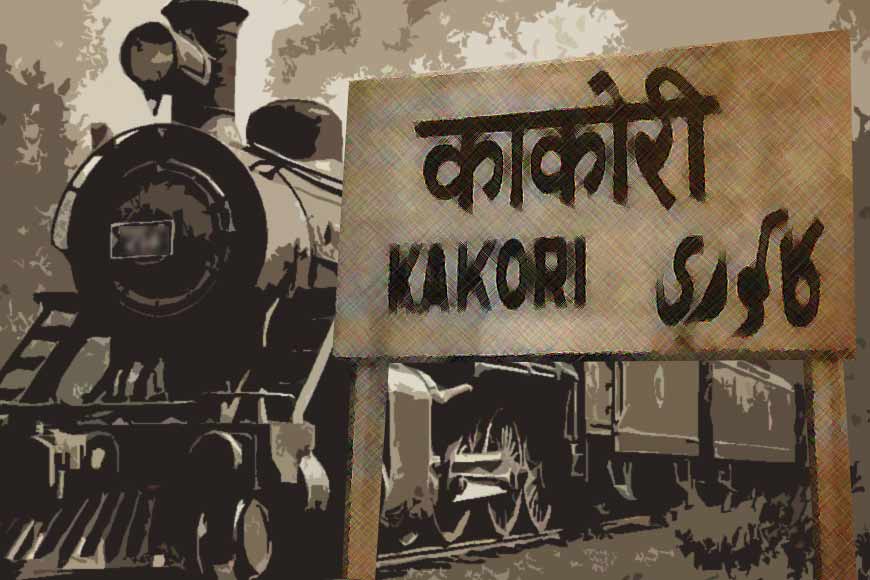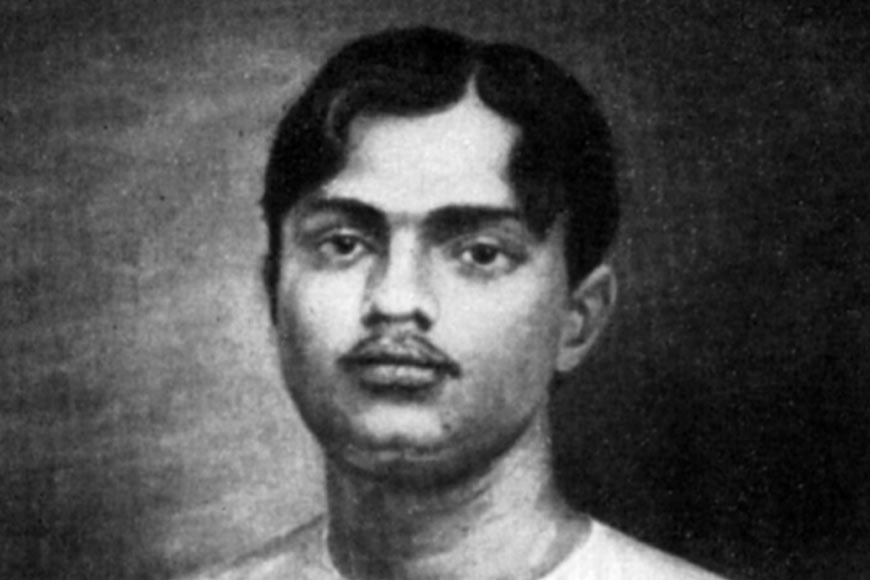The daring train robbery and the Bengali nationalist mastermind – GetBengal story

In 1873, Jesse James and his gang pulled off one of the most daring train robberies in the history of the world. But that was an adrenaline rush of a different kind, where money or arms were the prime objective. But what about a train robbery to free one’s nation from foreign rule? Masterminded by a revolutionary from Bengal. India witnessed such a train robbery in Kakori, a small, nondescript village in Uttar Pradesh, on August 9, 1925.
In different parts of India, revolutionaries were trying to oust the British. In those days, Lucknow was a hotbed of anti-British movements. The Kakori train robbery is considered a milestone in the history of the Indian independence movement. It was a joint effort by the revolutionaries of the Hindustan Republican Association, or HRA. The mastermind of the whole robbery was a Bengali.
Rajendra Nath Lahiri was born on June 29, 1901, in the village of Lahiri Mohanpur to a Bengali Brahmin family in the Pabna District (now Bangladesh). His father, Kshitish Mohan Lahiri, owned a large estate there. At a very young age, he decided to join the revolutionary movement. He became a mastermind in the Dakshineshwar bombing case and fled from Bengal to evade arrest. He landed in Varanasi and started studying at the Benaras Hindu University (BHU).
 Rajendra Nath Lahiri
Rajendra Nath Lahiri
In Varanasi, he came across Sachindranath Sanyal, the co-founder of HRA, and thus got inducted. A graduate in economics and history, Lahiri was the honorary secretary of the Bengal Sahitya Parishad and secretary of the health union at BHU. He wrote articles for Bangabani and Shanka, papers edited by Sanyal. He also wrote articles for a handwritten monthly magazine, titled Agradut. Lahiri was pursuing an MA in history when he was hanged at the age of 24 for trying to free India.
Lahiri was well-known for his disguises. He used several aliases, like Charu, Jawahar, and Jugal Kishore. Lahiri was one of the most well-read authors of socialist literature among the revolutionaries of his time, and he debated the question of religion in his private life as well as in his public life. His comrade Manmath Nath Gupta, in an interview, said, “I had studied, Rajendranath Lahiri had studied, and we both had reached the conclusion that the socialist philosophy was an integral part of socialist thinking. The two could not be separated, and we were already anti-religious and had started thinking in terms of atheism. At least we were agnostic.”
Being anti-religious was considered an important part of becoming a socialist in the Marxist tradition among the HRA revolutionaries. Lahiri belonged to the ‘young’ comrade group and challenged the social and traditional moors of upper-caste Hindu society. Jogesh Chandra Chatterji, co-founder of the HRA and co-accused in the Kakori conspiracy, writes in his autobiography In Search of Freedom (1958) that Rajendra Lahiri was an out-and-out revolutionary who revolted against social prejudices, and though a Brahmin, he threw away the sacred thread. He took pork and beef without the least hesitation. He realised at heart that social prejudices were great hindrances in the path of progress, and they were to be broken off mercilessly. That was the real spirit of a true revolutionary.”
It was Lahiri who stopped the train during the Kakori action by pulling a chain from a second-class compartment. Before participating in the historic Kakori train dacoity, Lahiri was involved in several holdups for the HRA in the United Provinces to collect funds for revolutionary activities. He was arrested and tried in the previous bomb case in Dakshineswar, Bengal, and sent to jail for ten years of rigorous imprisonment. When the legal proceedings started in Lucknow for the train robbery, he was also included in the Kakori conspiracy case and tried with several other revolutionaries.He was found guilty after a long trial and was hanged in the Gonda district jail on December 17, 1927, two days before the scheduled date, along with Thakur Roshan Singh, Ashfaq Ullah, and Ram Prasad Bismil.
The robbery was conceived by Ram Prasad Bismil and Ashfaqullah Khan, along with Lahiri, who were members of HRA. Since the organisation needed money for the purchase of weaponry, they planned to rob a train on the Saharanpur railway lines.On August 9, 1925, the Number 8 Down Train was travelling from Shahjahanpur to Lucknow. When it passed Kakori, Rajendra Lahiri pulled the emergency chain to stop the train, and subsequently, the other revolutionaries overpowered the guard. It is believed that this specific train was targeted because it was carrying money bags (taxes) that belonged to Indians and were being transferred to the British treasury. They looted only these bags (which were present in the guards' cabin and contained about ₹ 8000) and escaped to Lucknow. The objectives of this robbery were to fund the HRA with the money the British administration taxed from the Indians, to protest against the British administration collecting a lot of tax from Indians, and to garner public attention by creating a positive image of the HRA among Indians.
A lawyer, Ahmad Ali, was a passenger who had gotten down to see his wife in the ladies compartment and was killed in an unintentional discharge by Manmathnath Gupta, but this made it a manslaughter case. Following the incident, the British administration started an intense manhunt and arrested several of the revolutionaries who were members or part of the HRA. Lahiri, in his last days, had become religious. A transformation which Gupta attributes to the mishap at the Dakshineswar bomb factory, the “octopus-like grip” of Sachindranath Sanyal, who was guiding his studies in Lucknow Central prison, and his extreme loneliness in Gonda and Barabanki prisons, where he was for the last six months of his life. Sanyal, being part of the ‘old’ guard of the HRA, deeply believed in the Vedanta and was able to ‘convert’ Lahiri on the path to religion in his last days.










